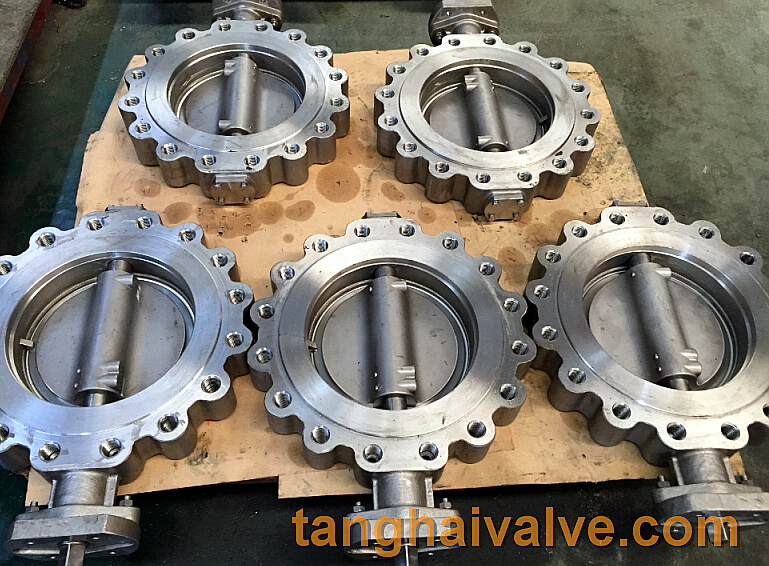The difference between American, Germany and China standard valve
The difference between American standard valve, German standard valve and China standard valve

lug type butterfly valve, ductile iron, center lined,
(American Standard, German Standard, National Standard) The difference between the valves:
First of all, it can be distinguished from the standard codes of various countries: GB is the national standard, the American standard (ANSI), and the German standard (DIN). Secondly, it can be distinguished from the model. The valve model of the national standard is named according to the pinyin letter of the valve category. For example, the safety valve is A, butterfly valve, D, diaphragm valve, G, check valve, H, globe valve, J, throttle valve, L, drain valve, P, ball valve, Q, trap, S, gate valve, and so on. ,
There are no special specifications between American standard valves, German standard valves, and national standard valves. It is nothing more than the difference between production standards and pressure levels. The material of the valve body and internal parts are easy to say, it is nothing but cast iron, cast steel, stainless steel, etc. Taking the American standard as an example, the pressure level of the American standard ranges from 125LB to 2500LB (or 200PSI to 6000PSI), and the main standard is API, ANSI, commonly referred to as API, and ANSI valves are American standard valves; German standard valve pressures are usually PN10 to PN320. DIN standard; if the valve is flanged, the corresponding flange standard must be adopted. The world’s main valve standards are also the American Standard Petroleum Institute API standard, the American national standard ANSI, the German standard DIN, the Japanese standard JIS, the national standard GB, the European standard EN, and the British standard BS. ,
Simply put, American standard valves are valves designed, manufactured, produced and tested according to American standards. German standard valves are valves designed, manufactured, produced and tested according to German standards. The national standard valve is the valve designed, manufactured, produced and tested according to our country’s standard. The differences between the three are roughly as follows: 1. The flange standards are different; 2. The structural length is different; 3. The inspection requirements are different.
National Standard Valves American Standard Valves German Standard Valves (American Standard, German Standard, National Standard) Valve Standards: Chinese National Standards (GB) Chinese Ministry of Machinery Standards (JB) American National Standards (ANSI) American Petroleum Institute Standards (API) American Society for Testing and Materials Standards (ASTM) American Valve and Fitting Manufacturers Standardization Association Standards (MSS) Japanese Industrial Standards (JIS) German National Standards (DIN) French National Standards (NF) British National Standards, European Standards (BS, EN) Other National Valve Standards ( ГOCT, IEEE, UL)
Tianjin Tanghai Valve Manufacturing Co., Ltd. is one of the largest butterfly valve manufacturers in China. It was founded in 2006. Its predecessor was Tanghai Valve Manufacturing Factory. Now we have our own independent R & D, manufacturing, assembly and warehousing workshops; we have professional pre-sale and after-sale technical support and perfect services.
After 14 years of continuous development and innovation, the company now has a group of high-tech engineers, technicians and skilled production workers, advanced production technology, sophisticated manufacturing equipment, complete testing methods, in strict accordance with international standards and quality management system, formed A comprehensive quality control network.
Our products use advanced manufacturing technology, and strictly conform to API, DIN, BS, EN, ISO, GB and other international standards. The main products are butterfly valves, gate valves, check valves, globe valves, valve parts (Valve body, Valve disc, Valve shaft, Valve seat…), etc. Our products are widely used in various fields such as marine industry, shipbuilding, petrochemical, metallurgy, water treatment, fire fighting, water supply and drainage, etc. The company has won unanimous recognition and praise from customers with high quality and good reputation.
TH Valve is a professional manufacturer of butterfly valve, gate valve, check valve, globe valve, knife gate valve, ball valve with API, JIS, DIN standard, used in Oil, Gas, Marine industry, Water supply and drainage, fire fighting, shipbuilding, water treatment and other systems, with Nominal Diameter of DN50 to DN1200, NBR/EPDM/VITON, Certificates & Approvals: DNV-GL, Lloyds, DNV, BV, API, ABS, CCS. Standards: EN 593, API609, API6D
Related news/knowledge:
The difference between API, DIN valve and GB valve;
Main application areas of 10 major types of valves;
Valve seal (ring) material usage range comparison table;
The main classification methods of butterfly valve (1)




 © Copyright 2020 Tianjin Tanghaidongyang Valve Co., Ltd. All Rights Reserved.
© Copyright 2020 Tianjin Tanghaidongyang Valve Co., Ltd. All Rights Reserved.